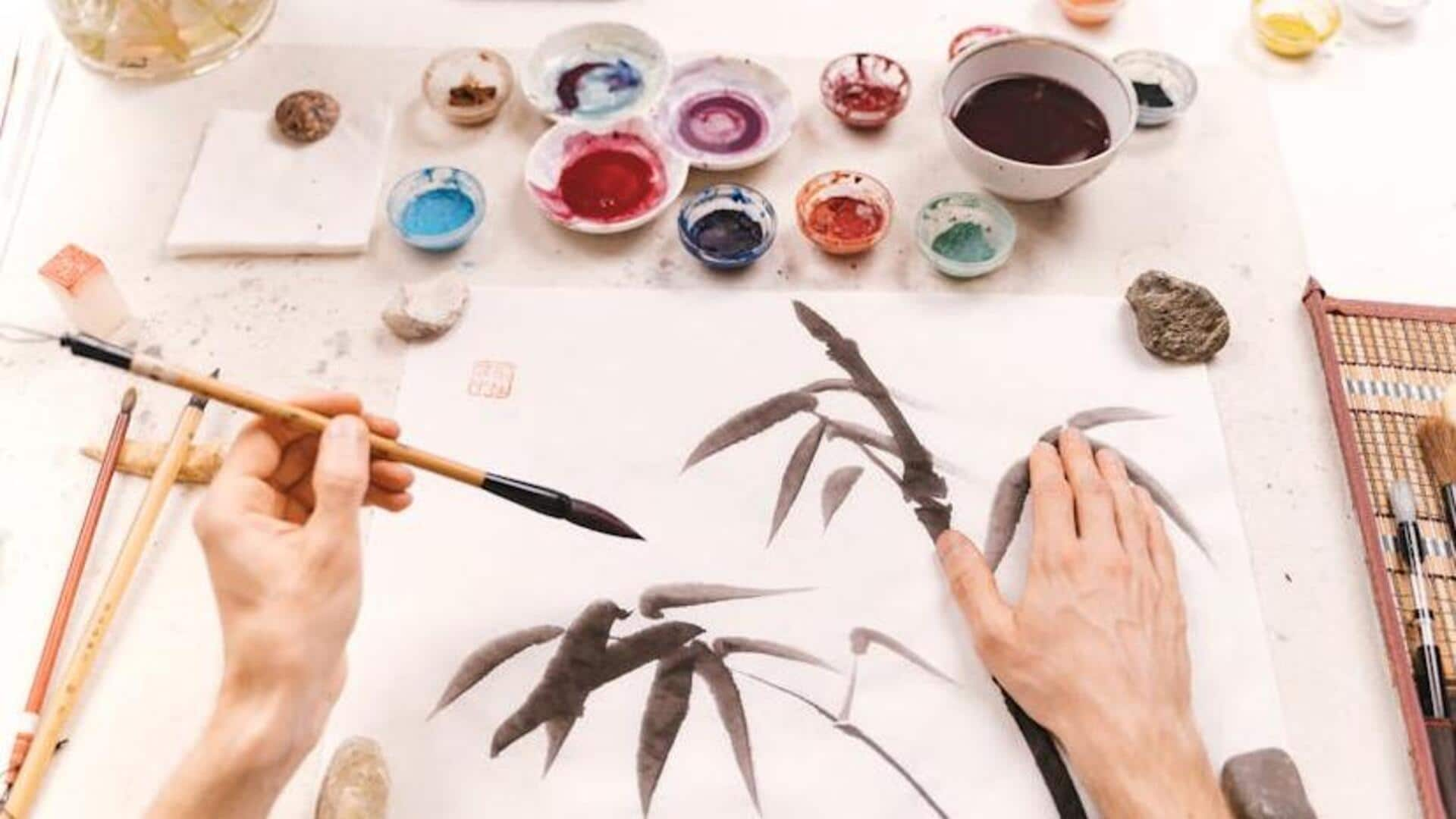
The serene harmony of Sumi-e ink painting
What's the story
The art of Sumi-e ink painting This traditional East Asian art form celebrates the beauty of simplicity and the harmony between nature and humanity. It originated in China over a millennium ago, before being embraced and refined by Japan. Utilizing black ink—identical to that used in East Asian calligraphy—and a mastery of brushwork, artists create pieces that are not only visually captivating but also imbued with profound philosophy.
Materials
The essence of sumi-e materials
In Sumi-e, the materials used are as important as the technique itself. Artists utilize a special ink stick, composed of soot and animal glue, which is ground on an ink stone with water to produce ink of varying thicknesses. Brushes, made from various animal hairs, provide unique stroke capabilities. Rice paper (washi) serves as the canvas, with its absorbent nature and texture greatly contributing to the beauty of the artwork.
Techniques
Mastering brush techniques
The heart of Sumi-e lies in its brush techniques, requiring years of dedication to perfect. Intentional strokes do more than depict the subject's physical form; they seize its very life force, its qi. The foundational study, "The Four Gentlemen," teaches four basic strokes, each representing a different plant: bamboo, orchid, chrysanthemum, and plum blossom. These plants symbolize resilience, humility, nobility, and perseverance—qualities deemed necessary for mastering this art form.
Philosophy
Philosophical underpinnings
Sumi-e transcends art; it's a spiritual discipline rooted in Taoist and Zen Buddhist philosophies. Painting transforms into meditation. Artists strive for oneness with nature, conveying their deepest emotions without unnecessary elaboration. This minimalism mirrors the Zen ideal of simplicity. Depicting a subject's essence with minimal strokes invites viewers to complete the picture with their imagination.
Themes
Exploring themes beyond nature
While traditional Sumi-e emphasizes natural subjects that symbolize various virtues or seasons (like cherry blossoms for spring or chrysanthemums for autumn), modern artists have pushed these boundaries to explore abstract themes and contemporary interpretations. These can include anything from cityscapes to human figures or even conceptual ideas—showing that while Sumi-e has a deep history, it's far from being stuck in the past!
Getting started
Practical tips for beginners
Get started with Sumi-e with just a few basic materials: ink stick, ink stone, brushes, and rice paper. Spend time grinding ink and getting a feel for brushwork. Master "The Four Gentlemen" through tutorials before moving on to more complex subjects or your own creative explorations.